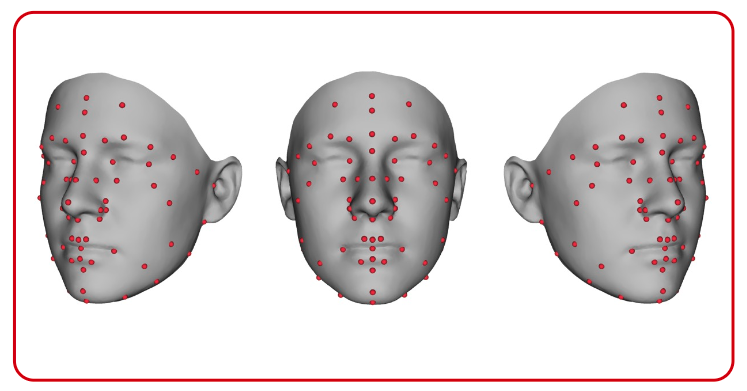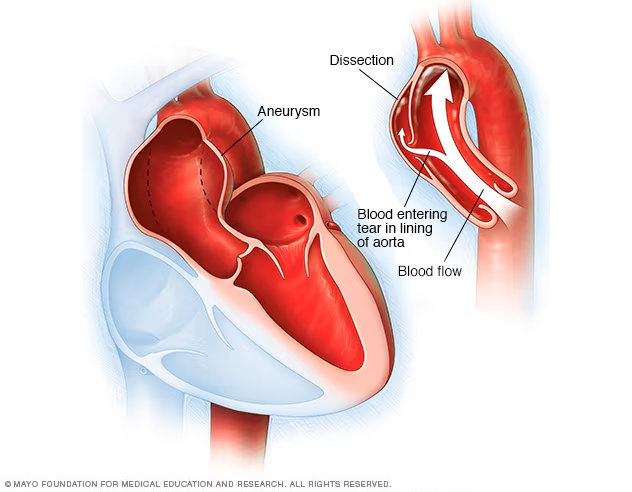Active Projects
Connective Tissue Syndromes and the Genetics of Aortopathy

Dr. Benedikt Hallgrímsson et al.
University of Calgary
People with heritable thoracic aortic diseases (HTAD) face serious risks of aortic aneurysms and dissections. These conditions can appear as part of a broader syndrome that affects connective tissue throughout the body—causing joint problems, skeletal differences, and muscle weakness—or as isolated, inherited forms without other visible symptoms. Even when the genetic cause is known, doctors still struggle to predict how severe the disease will become or when a dangerous event might occur.
This research explores an innovative idea: that subtle differences in facial shape may reflect the same underlying biological processes that affect the aorta. By studying 3D facial images alongside genetic data, researchers hope to uncover patterns that can help predict the severity of aortic disease and identify people most at risk.
Research Objectives
Objective 1: Link facial features to aortic disease severity
- Human studies: Using 3D facial scans and clinical data from people with syndromic and non-syndromic HTAD, researchers will test whether specific facial patterns are linked to faster aortic growth or more severe disease.
- Animal studies: In mice and zebrafish with genetic changes similar to those seen in humans, the team will explore whether variations in facial shape correspond with differences in aortopathy severity.
Objective 2: Identify the genetic drivers of disease severity
- Genetic analysis: The team will perform genome-wide studies to find genes connected to both facial shape and aortic disease features.
- Targeted testing: They will then focus on individuals at the extremes—those with especially mild or severe forms—to pinpoint which genes most strongly influence disease outcomes.
Expected Impact
Current clinical guidelines rely mainly on measuring the size of the aorta, which doesn’t always predict who is most at risk of a life-threatening dissection. By combining facial, genetic, and biological information, this project aims to create new tools that can improve diagnosis, help tailor monitoring schedules, and guide decisions about medical and surgical care—potentially saving lives through earlier and more accurate risk assessment.
Developing a Heritable Thoracic Aortic Disease Early Diagnostic System to be used in the Emergency Department and Primary Care Settings across Canada

Dr. Albert Mallia et al.
University Health Network, Toronto
People with heritable thoracic aortic diseases (HTAD) — including Marfan syndrome, Loeys-Dietz syndrome, vascular Ehlers-Danlos syndrome (vEDS), and Familial Thoracic Aortic Aneurysm and Dissection — are at risk for life-threatening events such as aortic aneurysms or dissections. Unfortunately, many individuals are not diagnosed until after a major medical emergency has already occurred.
Patients with HTAD often visit emergency rooms or family doctors for other cardiac and non-cardiac health issues, long before the underlying aortic condition is recognized. Current early diagnostic systems (EDxS) in Canada are not designed to catch these warning signs, even though similar systems have been effective for other diseases.
The aim of this project is to help healthcare professionals identify people who might have an undiagnosed HTAD earlier, so they can receive the right testing, follow-up, and treatment before a serious complication occurs.
Research Objectives
Objective 1: Identify the early warning signs of HTAD
Researchers will work directly with Canadians who have already been diagnosed with HTAD to collect information about their early symptoms and the types of medical visits they had before their diagnosis. This will help create a list of common cardiac (heart-related) and non-cardiac issues that may serve as “red flags” for doctors.
Objective 2: Build a national early diagnostic system (HTAD-EDxS)
Using these findings, the team will design and test a user-friendly diagnostic tool that can be implemented in emergency departments and primary care clinics. This system will help healthcare professionals recognize when to refer patients for a comprehensive HTAD workup and management plan.
Expected Outcomes and Impact
This system will not only raise awareness among healthcare professionals but also empower patients and families with earlier answers and access to proper care.
In the long term, this initiative aims to:
- Increase early detection of HTAD across Canada.
- Improve patient safety by preventing catastrophic aortic events.
- Build national awareness of HTAD within Canada’s healthcare system.
Through early recognition and intervention, this project hopes to save lives and improve quality of life for individuals and families affected by these rare but serious conditions.
